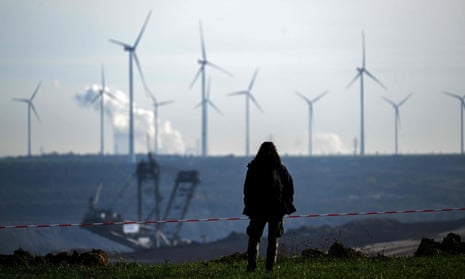In the past week almost 120 global leaders have pledged to triple the world’s renewable energy capacity before 2030 in a bold attempt to slash the global consumption of fossil fuels.
As the second half of the Cop28 UN climate conference in Dubai unfolds in the week ahead, more countries may join the calls for a global target of 11 terawatts (TW) of renewable power by the end of the decade, three times higher than the 3.629TW in place at the end of 2022.
Tripling the world’s renewables by 2030 is an “ambitious yet achievable goal”, according to the International Energy Agency (IEA). Based on the rate of growth for wind and solar power in recent years, the world is on track to meet this target.
But the global energy watchdog has warned that “stronger policy actions by governments” will be required to surmount the obstacles that threaten to slow the progress of wind and solar power developers. Overcoming challenges, such as rising costs, uncertain supply chains and grid bottlenecks, is considered essential for leaders struggling to hit their goal of limiting global heating to within 1.5C of pre-industrialised levels.
Tripling the world’s renewables would halve the global demand for coal power by 2030, according to estimates, which would deliver almost half the reductions in methane – a potent greenhouse gas – needed from the coalmining sector this decade.
“This is crucial for 1.5C,” said Dave Jones, the global insights lead for climate thinktank Ember. “The tripling goal would take renewables to the next level, with solar and wind reaching 40% of global electricity generation by 2030. Together, these would unlock deep economy-wide fossil fuel reductions and ensure that oil, coal and gas demand not only peak this decade but see a meaningful fall.”
The goal has won the support of 118 countries, which could pave the way for a historic opportunity to cement the ambition in the Cop28 final text. In practice, not every country would be increasing its renewable capacity threefold to hit the global target. Some countries starting from a lower level would need to more than triple their wind and solar power, while for others with a high share of renewables already, it would not be feasible to triple their capacity again.
Chinese wind turbine maker Envision Energy believes meeting the international pledge by 2030 would be “easy”. “This is not visionary,” its chief executive, Lei Zhang, told journalists at the Dubai summit. “If you look at the wind and solar growth rate in the past, you see triple is not difficult because all renewables have been lower cost than fossil fuel.”
Increasing capacity may have been simple in recent years with the help of low interest rates and generous government support schemes, but the sector’s progress for the rest of the decade is less certain. Rising inflation and the disruption to the global offshore wind supply chains has taken a toll on the biggest offshore wind developers in the last year by raising costs by over 40% in some cases. Higher interest rates have pushed up the cost of financing.
More than 90 gigawatts of wind capacity was installed globally across 55 markets in 2022, 14% less than in 2021, according to data from S&P Global. The figures show that global offshore installations more than halved to 9GW in 2022, driven by steep declines in mainland China and the UK.
The future growth of solar power looks relatively assured as global manufacturing capacity is set to reach 1TW a year in 2024, according to the IEA. Still, solar power projects are expected to face a more difficult time connecting to power grids, which require a dramatic rewiring to cope with the extra demand.
Fatih Birol, head of the IEA, has urged governments to “open their eyes” to the scale of the task facing them. Advanced economies will need to lay at least 23m km of power lines by 2040 to meet their renewable energy goals, the IEA says, and on a global level, 80m km of cable will be needed.
So far China and India, two of the world’s biggest polluters, have not backed the pledge despite setting ambitious renewables agendas of their own. India is aiming to triple its renewable capacity by 2030, said Ember. It found that China was responsible for two-thirds of global growth in solar and wind in the first half of 2023, while official forecasts predict the country will double its renewable capacity by 2030.
